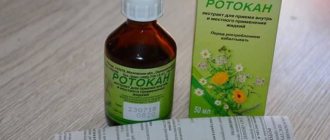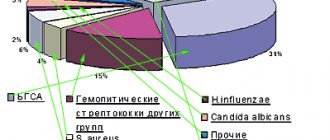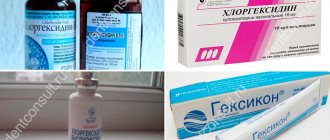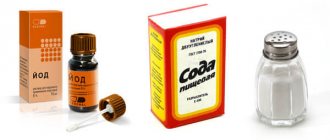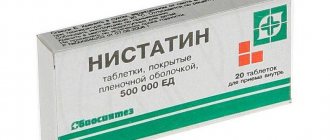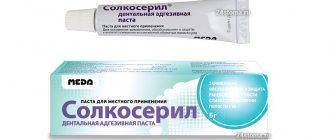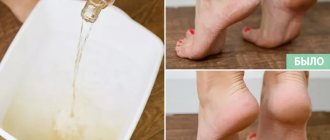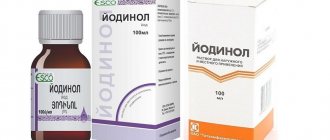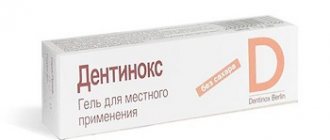Chlorhexidine (“Chlorhexidine bigluconate”) is one of the most popular gargles for a wide range of infectious and viral diseases. Its fame is due to its availability and decades-proven effectiveness. However, it is not clear to everyone how to dilute Chlorhexidine for rinsing. In the article we will present in detail the instructions for preparing the solution for adults and children, indications for use, analogues of the product, recommendations for more effective use.
Characteristics of the product
"Chlorhexidine" by its nature is a universal antiseptic. It was first synthesized at the beginning of the last century in Great Britain. From then to the present, it has been the leading disinfectant for the external treatment of skin, as well as medical instruments. Widely used in surgical practice. In addition to being an independent drug, it is part of many medications - antiseptic, promoting skin regeneration, etc.
"Chlorhexidine bigluconate" is produced by dozens of Russian enterprises alone. In fact, there is no difference in their products. The product differs only in its concentration. In this format it can be presented in five variations:
- 0,05 %.
- 0,2 %.
- 0,5 %.
- 1 %.
- 5 %.
What do these numbers mean? For example, 100 ml of a “Chlorhexidine” solution of five percent concentration (5%) contains 5 ml of the active substance.
The composition of Chlorhexidine preparations is identical. These are just two elements:
- Purified drinking water.
- Ingredient: chlorhexidine bigluconate.
Release form: solution in vials (plastic, glass) of various volumes. The most common containers in pharmacies are 100-500 ml containers. Bottles with a volume of 2 liters or more are produced especially for medical institutions.
How is Chlorgesidine used? What is it used for? The scope of its application is wide. If you purchase the drug specifically for rinsing, then it is better to stop at a solution of 0.05% concentration.
Description of the drug
Chlorhexidine is an antiseptic drug that is active against gram-positive and gram-negative bacteria, some protozoa, as well as the causative agent of the herpes virus. The product is used to disinfect surfaces during surgical interventions, treat surgeons' hands and skin surfaces. After treatment, it retains the bactericidal effect for some time. There is a decrease in the bactericidal effect in the presence of organic liquids (blood, pus, lymph).
Externally, Chlorhexidine is a clear liquid similar to water. In the finished solution, the active ingredient is chlorhexidine bigluconate. The concentration of the active substance in the solution varies - 0.05% and 20%, and, accordingly, the release volume is 100 and 500 milliliters.
If you do not have the time or opportunity to read the entire article, watch the video on this topic:
Chlorhexidine has high antibacterial activity. Its field of influence includes E. coli, gonococci, Klebsiella, staphylococcus and streptococcus, the causative agent of syphilis and tuberculosis, chlamydia, ureaplasma, viral hepatitis and many others. Treatment of the skin with a solution of Chlorhexidine does not lead to the absorption of its active component into the blood.
Depending on the concentration of the active component, the scope of application of the solutions is different. A 20% solution is used for the following purposes:
- the surgeon's hands and the surgical field are treated before manipulation;
- in food production, the hands of workers are disinfected;
- antibacterial treatment of the skin of the hands of medical workers of any profile;
- in treatment rooms, treatment of the injection site;
- processing of small medical instruments.
A solution of higher concentration is used to prepare a solution of lower concentration. A weak solution, in turn, is used for preventive purposes to avoid re-infection during surgery, as well as in the treatment of pathological skin conditions due to fungal or bacterial diseases, wound suppuration, and infectious diseases of the mucous membranes.
Chlorhexidine is highly effective in the treatment and prevention of many infectious diseases that are predominantly sexually transmitted.
Chlorhexidine solution has become widespread in the treatment of many diseases of the oral cavity, including dental diseases.
Release forms
“Chlorhexidine” for sore throat is not only a base for preparing a solution for rinsing. The same component can be found in other effective products. These drugs can be prescribed not only for acute viral and respiratory diseases:
- Dental gels. These are “Metrogil”, “Metrodent”, “Denta” and so on.
- Sprays and tablets indicated for diseases of the nasopharynx and throat - “Drill”, “Anti-angin”, “Sebidin”, etc.
- Cream preparations used for wound healing - Pantoderm, Depanthenol.
- Corticosteroid anti-inflammatory gels. For example, "Bemilon".
- Sprays and gels with a mild analgesic effect - “Lidocaine”, “Instillagel”, etc.
How to use chlorhexidine for colds?
This drug is good not only for treating a sore throat, but will also have a positive effect when you have a runny nose. Of course, with a cold, nasal congestion often occurs and can last for a long time.
The main purpose of chlorhexidine for colds is to rinse the nose. To do this, you should follow a few simple rules.
- The first thing to do is to thoroughly clear the nasal passages of mucus (as much as possible).
- Chlorhexidine, do not forget, should be warm or at room temperature.
- Lie on your side and instill liquid into the upper nostril. And from the second the contents should flow out.
- If suddenly the medicine gets into the mouth, then it must be spat out.
- And there are also small restrictions - you cannot lie down for an hour! Because residual liquid can still penetrate inside.
- Chlorhexidine at a concentration of 0.05% is also suitable for the nose. There is no need to dilute it; we have already said that this weakens the medicinal properties of the drug.
How does the product work?
"Chlorhexidine" for sore throat and other diseases characterized by inflammation of the oropharynx is one of the most effective drugs. It's all about its bactericidal and fungicidal effect.
The benefits of using the drug have been confirmed in laboratory conditions. For the experiment, we took a regular 0.05% solution of the drug. The tests were carried out at room temperature (+22 °C).
The result was as follows:
- Death of bacteria - after 1 minute of exposure.
- The death of fungal organisms occurs after 10 minutes of exposure.
Moreover, it is noted that as the ambient temperature increases, the effectiveness of the solution begins to increase. For example, already at 40-50 degrees (the temperature of the liquid at which comfortable rinsing of the oropharynx is possible), the exposure time is almost halved!
This means that it is enough to hold the solution in your mouth for about 30 seconds to eliminate all harmful microorganisms living there. How to achieve a fungicidal effect (against fungal creatures)? After the procedure, it is important to abstain from drinking and snacking for a while.
Is it possible to spray chlorhexidine down children's throats?
Yes, this drug is available not only in the form of a solution, but also as a spray or suppositories (vaginal). And, naturally, the question arises: is it possible to spray your throat with such a spray? After all, it’s much more convenient (especially when it comes to throat diseases). Let's think logically and sort everything out in order.
- Yes, the spray is really more practical in this matter. After all, they can reach much further. But, as a rule, it is used after rinsing. After we have washed away all the germs, we need to drop something in to soothe and give an additional healing effect. Now we are talking about other throat sprays.
- But! When we spray a spray down the throat, where does the liquid go? That's right, we swallow it. Even an adult will find it difficult to spit out the contents.
- Therefore, children under 12 years of age are strictly prohibited from spraying the spray. And for adults too. This drug is very concentrated and toxic, so it can damage the mucous membrane of the throat.
- In general, the spray has a direct purpose - it is the treatment of hands and surfaces.
IMPORTANT: We remind you! What is prohibited from swallowing chlorhexidine! Chlorhexidine can only be used as a throat irrigant.
How to irrigate the throat with chlorhexidine:
- It is more convenient to perform this procedure using a syringe (without a needle) or a syringe.
- Yes, this procedure can be done for children. But, preferably, after five years. For small children there are a number of equally effective and less aggressive drugs.
- We dilute it to the concentration that we have already indicated above.
- Important! The child's head should be tilted forward, face down. This is done so that the liquid flows out easily.
- We remind you once again that the liquid must be warm. Firstly, this enhances the qualities of chlorhexidine. And secondly, for a sore throat there is nothing better than warm (not hot) water.
- It should be processed in the same way as in rinsing, for at least 30 seconds.
- And also do not consume food and water for 1.5-2 hours.
- A small recommendation - ask the child to carefully spit out the liquid, which, even in small doses, is present in the saliva!
Before rinsing
The reader will soon learn how to dilute Chlorhexidine for rinsing. It is equally important to properly prepare for the procedure - this will increase the effect of using the product.
The preliminary steps are simple:
- Before using Chlorhexidine, rinse your mouth and throat with plain water. But it’s better to avoid salty and soda solutions! In this case, the pH of the environment increases. Under such conditions, chlorhexidine bigluconate precipitates. And this makes rinsing more noticeable and even painful for you.
- The instructions for the solutions say that instead of rinsing, you can brush your teeth. Experts consider such preparation to be more effective, since “Chlorhexidine” is more intense in a slightly alkaline (pH 7-8) or neutral (pH 5-7) environment. Do not use hard tap water for preliminary hygiene procedures. It will reduce the beneficial bactericidal properties of Chlorhexidine.
How to use Chlorhexidine in gynecology
The product is actively used to prevent sexually transmitted diseases. No later than 2 hours after unprotected intercourse, you need to take the solution. Men will need to insert 2 ml into the urinary canal, and women will need to insert 2 ml into the urinary canal and another 5-7 ml into the vagina. It is recommended to wipe the skin around the genitals with the solution. The instructions say that after using the drug you need to wait 2 hours before urinating. Otherwise, the effect of use will be less.
For preventive purposes, vaginal suppositories can be used.
Before using the product for thrush and other gynecological pathologies, you should consult a specialist in advance.
Application of 0.05% solution
The instructions for using Chlorhexidine for rinsing are quite simple:
- Pour the required volume of solution from the bottle into a special glass or other convenient container.
- Sip a small amount and keep it in your mouth.
- Tilt your head back and begin the procedure, not allowing the liquid to go down the esophagus.
- Tilt your head, throw it back deeper, return to the starting position. This is done so that the drug covers all the walls of the oropharynx.
- To achieve the effect, it is enough to rinse with one such portion of the solution for thirty seconds.
- Spit out the product - do not swallow it.
The recommended number of rinses (half a minute each) is about three times a day.
How to gargle: instructions for use
- Take a solution of chlorhexidine, the concentration of which is 0.05%, then dilute it 1 to 1 or 1 to 2 with warm water. If the child is over 12 years old, do not dilute the solution.
- Since a diluted or open medicine loses its properties in 30-40 minutes, prepare a portion of the solution for one procedure immediately before manipulation.
- First, the child should rinse the neck several times with just warm water.
- Next, he should take the prepared chlorhexidine solution in the amount of one tablespoon into his mouth and gargle for about 30-60 seconds.
- For sore throat, this rinse is performed twice in a row.
- After treatment, you should not eat or drink anything for 1-2 hours.
- Rinsing is performed 2-3 times a day, and in case of severe sore throat - up to 4 times.
- Duration of use should not exceed 7 days.
How to properly dilute Chlorhexidine?
So, only the 0.05% concentration of the drug does not require dilution. It can be used for rinsing immediately, which is why we recommend purchasing this type of product.
And if you bought a drug with a higher percentage of chlorhexidine bigluconate, then it must be further diluted with water before use. This is not done “by eye”, but in compliance with certain proportions.
How to dilute Chlorhexidine for rinsing:
- 0.2% concentration. Dilution with water in a ratio of one to four (one part Chlorhexidine to four parts water).
- 0.5% concentration. Dilution with water in a ratio of one to ten.
- 1% concentration. Dilution with water in a ratio of one to twenty.
- 5% concentration. How to dilute Chlorhexidine 5%? Dilution with water in a ratio of one to one hundred.
How to dilute Chlorhexidine for a child? Maintain the same water-preparation ratios as given above.
It is important not only not to exceed the percentage of chlorhexidine bigluconate in water (this can lead to burns of the mucous membranes of the oropharynx), but also not to prepare a solution that is too weak. It will be less effective and will not have the proper effect on microbes.
Chlorhexidine - application
To maximize the effect of using the drug, it is important to adhere to the following recommendations:
- Gargling with Chlorhexidine can only be done after preliminary cleaning of the mouth. To do this, you need to take a small amount of clean water into your mouth. After this, rinse for a minute and spit it out.
- You cannot eat or drink for the next hour. In addition, during this period it is important to talk less. All this is aimed at providing maximum peace to the throat.
- The medicinal liquid should not be swallowed. If a small amount gets into the stomach, you need to take the adsorbent without hesitating for a minute.
How to dilute Chlorhexidine?
For rinsing, a 0.05% preparation is used. If Chlorhexidine Bigluconate solution is available in higher concentrations, the medication must be diluted before use. For this purpose, cooled boiled or distilled water can be used.
You need to dilute it like this:
- 0.2% solution in a ratio of 1:4;
- 0.5% agent in a ratio of 1:10;
- 1% drug in a ratio of 1:20;
- 5% medication in a ratio of 1:100.
- Instructions for use of Chlorhexidine bigluconate for gargling
How to gargle with Chlorhexidine for an adult?
To maximize the effectiveness of using the solution, it is important to carry out the procedure correctly. How to gargle with Chlorhexidine for a sore throat in an adult:
- Take 15 ml of a 0.05% solution into your mouth. For this it is better to use a special measuring spoon. Do not apply by eye, as if the dosage is exceeded, you can burn the mucous membrane.
- The head should be tilted back slightly and rinsed for 30 seconds.
- You need to spit out the waste liquid.
Irrigation of the larynx is allowed. Only knowing how to properly gargle with Chlorhexidine for adults can carry out the procedure properly and speed up the healing process. The number of approaches depends on how intensely the pathology manifests itself:
- if the condition is satisfactory, the procedure should be carried out twice a day (in the morning and before bedtime);
- if severe pain bothers you, manipulation can be performed every 4 hours.
How to gargle with Chlorhexidine during pregnancy?
This solution can be used by a woman during pregnancy. However, it is important for a pregnant woman to be extremely careful during the procedure to avoid swallowing even a small amount of medication. In addition, before using the medicinal solution, you should consult a doctor. He knows how to rinse with Chlorhexidine for pregnant women, and will give his practical recommendations. A single dosage for the procedure is 1 teaspoon of solution.
How to gargle with Chlorhexidine for children?
This medication can be used from 6 years of age. By this time, the child already understands how to gargle. However, the procedure must be carried out under adult supervision. If Chlorhexidine is intended for children aged 6 to 12 years, the drug must be diluted with cool boiled water in a 1:1 ratio. Those who are older can use a 0.05% solution. Single dosage – 1 teaspoon.
Features of the procedure for children
Chlorhexidine is an indispensable remedy for rinsing children. Note that for children, as well as for adults, the minimum concentration of the solution will remain 0.05%. There is no point in reducing it, otherwise to get the effect you will have to increase the exposure time of the product.
The instructions for the drug tell us that young age in itself is not a contraindication for use. However, parents should be aware that the solution tastes bitter and during the procedure can cause a burning sensation in the mouth and throat.
Most guys tolerate this procedure calmly. Another part of children is sensitive to the described unpleasant effects.
The frequency of rinsing is the same as for adults - two to three times a day. The oropharynx should also be treated with a solution of 0.05% concentration for half a minute. The parent needs to ensure that the child does not accidentally swallow the product during the procedure. To prevent this from happening, you can replace gargling for young children with treating the throat with Chlorhexidine in the form of a spray.
Rinse during pregnancy
During pregnancy, the use of chlorhexidine bigluconate is not recommended, as is the use of other medications. In cases of emergency and when other means do not help cope with the disease, the use of Chlorhexidine is permissible at a dosage of 0.05% and does not require dilution. The solution is used according to the general scheme recommended for treatment by a specialist.
The use of Chlorhexidine during pregnancy is the first remedy to combat the symptoms of vaginal candidiasis (thrush), as well as to combat the pathogens of syphilis and ureaplasmosis.
During the treatment process, the pregnant woman’s condition is significantly alleviated, and the absence of a negative effect on the development of the fetus has been proven. In addition, during pregnancy, women may be prescribed Chlorhexidine solution in the following cases:
- various sexually transmitted infections (trichomoniasis, herpes, mycoplasma, chlamydia, syphilis);
- inflammatory processes in the vagina of various etiologies;
- treatment of the birth canal before and after labor;
- treatment of sutures after operations;
- infectious diseases of the nasopharynx;
- washing of festering wounds and dermatitis of various etiologies.
The drug can only be used topically. During pregnancy, only irrigation or applications with a solution are used. For women with genital infections, it is convenient to use the drug in the form of suppositories, because the use of douching is unacceptable.
Rinse instructions for children
Parents now know how to dilute Chlorhexidine to rinse their child. Then it is important to follow a certain sequence of actions for greater effectiveness of the procedure:
- Do I need to dilute Chlorhexidine for rinsing? If this is a ready-made 0.05% solution, then no. If the drug is of higher concentration, then it is diluted with water in the proportions indicated above.
- Pour out 15 ml of solution. For convenience, you can use a measuring cup. A tablespoon can replace it if you know its volume.
- The child should gargle with the product by tilting his head back slightly and looking upward. While exhaling, he pronounces any vowel sound. Be sure to show your child how this is done. If the baby is too small, then it is better to refuse rinsing - he can easily choke.
- The procedure, as for adults, lasts 30 seconds.
- The solution must be spit out completely.
After the procedure, it is not recommended to drink or eat for two hours. It is best to rinse in the morning after breakfast and before going to bed in the evening.
Should I treat my throat with Chlorhexidine?
The drug is a powerful antiseptic that destroys pathogenic bacteria, viruses, fungi and protozoa. It has a minimum of contraindications and is suitable for use by all persons, including pregnant women and children.
The patient must adhere to simple rules for using an antiseptic:
- Do not swallow the solution. Otherwise, the patient must undergo gastric lavage and take absorbents.
- There is no need to exceed the rinsing time, concentration and dosage of the antiseptic.
- It is prohibited to use the product for more than 15 days.
- If the product gets into your eyes, rinse it with warm water. To reduce irritation of the conjunctiva, use special drops.
- It is recommended to store the solution away from heat sources.
- The effect of the medication is reduced if it is used simultaneously with iodine-containing drugs.
If the product has a high concentration, it can be diluted independently to a concentration of 0.05%. For the antiseptic to be more effective, it should be slightly warmed up.
Are rinses allowed for pregnant women?
Pregnancy is not a contraindication for using Chlorhexidine solution when gargling. This substance is not absorbed by the mother's mucous membranes.
Accidental ingestion of the solution by a woman is not dangerous for the fetus. Systemic absorption in this case will be so small that it will not have a negative effect on the child.
A few words about the medicine
Chlorhexidine is a safe and reliable drug for irrigation of the mouth and throat in adults and children. It is widely prescribed in ENT practice and is intended to eliminate the inflammatory process in the oropharynx, which develops when exposed to an infectious agent. The product has the following properties:
- inhibits the vital activity of various types of pathogenic microflora, but does not affect the beneficial microbes of the body;
- reduces pathological manifestations and washes away microflora and their waste products from the mucous membranes;
- accelerates the regeneration of damaged soft tissues;
- eliminates plaque.
Chlorhexidine has a wide range of uses, which depends on the concentration of the active substance:
- 0.05% - used to treat gums, throat and oral mucosa;
- 0.5% - treats wound surfaces, burns, and is used to disinfect medical instruments;
- 1% - the surgeon’s hands are treated;
- 5% - used for the manufacture of water- or glycerin-based preparations.
Many people are interested in whether Chlorhexidine is Hydrogen Peroxide or not. Although both drugs belong to the group of antiseptics, unlike Chlorhexidine, Hydrogen Peroxide contains another active ingredient.
Features of use for various diseases
Most often, gargling with a solution of Chlorhexidine is indicated for sore throat. The medicine here fights a large number of pathogens. Moreover, the manual for the product notes that bacterial resistance (addiction) does not develop to it.
When treating tonsillitis, it is also recommended to gargle with the drug at least three times a day. However, treatment should not be continued for more than a week - Chlorhexidine changes the color of tooth enamel, which we will discuss later. If it is necessary to continue the course of rinsing, it is best to replace it with a similar drug.
Drug analogues
If a patient has contraindications to the use of Chlorhexidine, the attending physician may prescribe another drug. Table "Chlorhexidine analogues":
| Drug name | Active substance | Manufacturer | Price |
| Miramistin | Benzyldimethyl[3-(myristoylamino)propyl]ammonium chloride monohydrate | LLC "Infamed" (Russia) | 300 rubles |
| Hydrogen peroxide | Hydrogen peroxide | YuzhPharm LLC (Russia) | 35 rubles |
| Furacilin | Nitrofural | OJSC “Dalkhimfarm”, OJSC “Irbitsky Chemical Plant”, OJSC “Tathimfarmpreparaty”, | 50 rubles |
| Rotokan | Flowers of calendula officinalis, chamomile and yarrow herb | JSC Pharmcenter Vilar (Russia) | 50 rubles |
| Bactoderm | Benzalkonium chloride, Chlorhexidine | Laboratoire INNOTECH INTERNATIONAL (France) | 1200 rubles |
The presented products are similar in their properties, are used for rinsing and are prescribed for a similar inflammatory process. However, drugs may differ in their antimicrobial activity.
Mouth rinse
Chlorhexidine solution is effective not only for curing diseases affecting the oropharynx. It is also used for therapy and prevention of infectious diseases of the gums and oral cavity. This is a good antiseptic and wound healing agent after surgical operations in this location. The procedure will significantly improve a person’s condition with infectious lesions of the oral mucosa - gingivitis, stomatitis, etc.
Moreover, rinsing the mouth with Chlorhexidine is also very useful for throat diseases. After all, a huge number of bacteria enter the pharynx from the oral cavity.
How to dilute Chlorhexidine for mouth rinse? In the same proportions as for the throat. The optimal concentration would be 0.05%. However, if the procedure does not bring the desired effect, then when rinsing the mouth, you can increase the concentration of the solution to 0.2%.
How to dilute Chlorhexidine to rinse gums? The instructions for the procedure will be similar to those described above.
conclusions
- Chlorhexidine is an effective drug that can be used to treat children over 3 years of age. The components included in its composition destroy pathogenic organisms, which helps speed up healing.
- It is used in diluted form for rinsing the mouth.
- The therapy is complex, the duration of treatment depends on the characteristics of the body.
- If allergic reactions or other side effects occur, therapy should be abandoned. We also recommend that you familiarize yourself with Ventolin for inhalation for children in this material.
Side effects
Now you are familiar with the instructions for using “Chlorhexidine” for rinsing. You also need to know about some unpleasant effects of the drug:
- Darkening of tooth enamel. Note that the effect is temporary, but can deprive the smile of its aesthetic appeal for some time.
- The appearance of deposits on tooth enamel. Such a negative effect can only be achieved with frequent systemic use of rinses.
The use of the drug does not have a serious negative impact on human health and life. Cases of side effects are so unlikely that they are not even described in the instructions for Chlorhexidine. This is what made it the most common antiseptic.
Advantages and disadvantages of treatment with chlorhexidine
Before deciding which is better to rinse your mouth for gum inflammation, you should familiarize yourself with the features of the drug. Chlorhexidine has its positive and negative effects.
Important: gum inflammation is often accompanied by bleeding gums, which means there is a risk of infection.
Table 1: Pros and cons of using chlorhexidine to treat gum disease:
| Pros of use | Disadvantages of use |
| The drug has a wide spectrum of effects. | It does not eliminate the cause of inflammation, but only fights the symptom. This property explains short-term relief. |
| The drug has a prolonged effect, protects against bacteria for several hours after use. | The drug has a bitter aftertaste. |
| The medicine is already ready for use, it can be used in any convenient place and is convenient to take with you. | The drug should not be swallowed. For many people, this may cause them to refuse to use this drug. |
| The bottle has a convenient tip. Some manufacturers include a spray nozzle included. | With prolonged use, it leaves a dark coating on the tooth enamel. |
| The price of the drug is not high and makes it widely available. | Not active against viruses. |
Important: the dark coating from using the drug will disappear a couple of days after finishing its use.
The effectiveness of chlorhexidine for gum inflammation
To solve an unpleasant problem you need to know how to rinse your mouth with chlorhexidine for gum inflammation
When gums become inflamed, swelling and redness of the gum mucosa is observed. Fabrics become more sensitive to touch and temperature changes. Gums are easily damaged. All these symptoms cause unpleasant, even painful sensations. Reduce the patient's quality of life.
This condition requires treatment, and chlorhexidine is exactly what you should use to rinse your mouth with when you have gum inflammation.
Inflammation of the gums is a symptom that accompanies some dental diseases:
- gingivitis;
- periodontitis.
The cause of inflammation in these conditions is the presence of microbial plaque on the teeth or hard deposits. Many experts indicate that chlorhexidine is fully effective after removing the cause of inflammation. If you use the drug without eliminating the root cause, the effect of use will be much weaker.
Important: with complex treatment, special toothpastes that contain chlorhexidine can help, but using such toothpastes constantly is not recommended; the instructions for the toothpaste will tell you about the rules of use.
Analogues of the drug
Chlorhexidine digluconate is an active ingredient not only of the drug of the same name. It is also part of similar medications (in terms of concentration, effectiveness, dosage, etc.), but produced under a different name. Complete analogues of “Chlorhexidine” in composition are “Amident” (0.15% con (0.005% concentration).
Also in pharmacies you can find analogues of “Chlorgesidine” for antiseptic properties. The composition and active substances of these drugs will be different. Let's briefly introduce them:
- Hydrogen peroxide. There have been no comparative clinical studies of Chlorhexidine and peroxide. However, practical experience shows that chlorhexidine bigluconate still copes better with ARVI pathogens when rinsing. However, hydrogen peroxide is more effective for purulent inflammation. It can also be used for hygienic rinsing in case of sore throat. An important detail is that it does not darken tooth enamel, unlike Chlorhexidine.
- "Furacilin". A well-known, inexpensive and effective antiseptic. Widely used both at home and in medical institutions. Available in several forms - alcohol and aqueous solutions, tablets. The active ingredient of this drug is nitrofural. It has both fungicidal properties (fights fungal microorganisms) and bactericidal properties (fights bacterial microorganisms). It is also good as a rinse solution.
- "Miramistin". Unlike all the drugs mentioned above, this one is not a traditional, but an innovative antiseptic. Many of the best means for gargling and mouthwash. This is confirmed by the antimicrobial characteristics of the drug. It is also impossible not to note its following advantages: it is odorless and tasteless, does not cause irritation of the mucous membrane or any unpleasant effects. But there is a significant disadvantage: the cost of Miramistin is approximately higher than the price of Chlorhexidine and other described agents.
Let's summarize. “Chlorhexidine” is a highly effective budget antiseptic that fights a wide range of pathogens that cause diseases of the gums, throat, and oral cavity. Only one concentration is suitable for use - 0.05%. All others need to be diluted with water before this one. Among the negative aspects are burning, bitter taste, temporary darkening of tooth enamel (with long-term use). In hypersensitive people, rinsing with Chlorhexidine may cause nausea and vomiting.
When is it used in childhood?
According to the instructions for use of the drug, Chlorhexidine can be used in childhood, but with caution.
Diseases of the throat and nose
In the practice of ENT doctors, chlorhexidine is quite in demand. The drug is used for pain and inflammation in the throat, including purulent lesions. It is effective for sore throat, laryngitis, tonsillitis and pharyngitis.
The medicine is prescribed to children for the following procedures:
- Gargling. This procedure is especially often prescribed when a child develops a sore throat. Chlorhexidine reaches infected areas and affects them, despite the presence of pus, so this drug is also effective for purulent tonsillitis.
- Irrigation of the throat. To perform it, the child’s head is tilted face down over the sink, chlorhexidine is drawn into a syringe or into a syringe without a needle, then the neck is irrigated for thirty seconds so that the medicine gets onto the mucous membrane and then poured into the washbasin.
- Nasal rinsing. Chlorhexidine helps to quickly cure some types of runny nose and is safe for the nose, but is rarely used at home for rinsing. Parents prefer to resort to more proven means - saline solution and miramistin.
- Inhalations. The medicine is added to the nebulizer for procedures for inflammation of the upper respiratory tract.
Dental diseases
Chlorhexidine is prescribed to children who have developed stomatitis (especially aphthous), since the drug reduces swelling and helps relieve inflammation in the oral cavity. Also, rinses and irrigations can be prescribed by the dentist for gum diseases (periodontitis, gingivitis) and for treating the oral cavity after tooth extraction.
External use
Chlorhexidine, due to its antiseptic and antibacterial effects, has long shown its effectiveness against lesions of the skin and mucous membranes:
- Chlorhexidine is used to treat wounds on a child's skin (abrasions, cuts, burns) to reduce or prevent inflammation and infection by bacteria.
- The drug is often prescribed for rinsing the earlobes after they are pierced.
- For diaper rash in babies, this drug is not prescribed due to age restrictions on its use.
- Is it possible to gargle with chlorhexidine for a sore throat?

